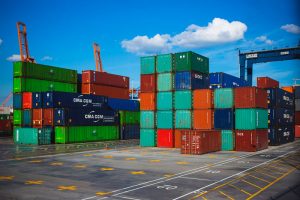Today goods logistics and transport are essential services for the everyday functioning of society and its economic mechanisms. This has been the case since the appearance of economic offshoring and globalisation, which increases global communication and interdependence between different countries of the world by the day, uniting their markets, societies and cultures. That’s where transport has its place as a key piece; to give the most illustrative example, 90% of the goods used in our everyday lives or in the different economic activities are shipped by sea.
Today there are methods of transport to suit every type of company, good or need. That’s why the criteria for selecting one or another means or method will depend on the characteristics of each shipment. Even so, the most influential factor for companies is, without a doubt, the cost of transport. Other variables to be taken into account are generally delivery speed or deadlines, product type, distance, economic and environmental effectiveness, transport safety or precision of the different ways of moving goods, among many others. Below we look at the most common methods of transport and their general characteristics.
Overland
Includes road transport in lorries or other types of vehicle and rail transport. This is the most versatile of all existing methods of transport owing to its high capacity for personalisation, being able to transport all kinds of goods as well as offering a wide variety of options for configuring distribution such as, for example, “door-to-door” delivery. Furthermore, it is a fast and generally affordable method, particularly when the distances involved are not excessive.
Rail transport covers greater distance than road transport and is generally used by factories in the primary sector, given that it requires high investments and transports large quantities of goods, normally in bulk format.
Sea and river
Maritime transport is the most commonly used for international shipments due to being able to carry enormous loads, making it a very cheap way to transport all kinds of products: in containers, bulk, etc. For its part, river transport is a method commonly used for national delivery, given its speed and safety.
Air
Air transport is the fastest way to move goods, although its cost is not always comparable to the sea or road options. However, the speed/cost ratio makes this an interesting option for companies. Although initially devised to transport people, the progress made in aeronautics (bigger planes and with greater load capacity, etc.) and, particularly, appearance of the TEU container meant that it could transport goods competitively. It is the mode of transport par excellence for military ware and goods of a perishable nature requiring fast transport.
Intermodal and multimodal transport
While not actually a mode of transport in itself, this is an option used increasingly more frequently by logistics companies for their international shipments. This kind of transport, which we already discussed in the blog, combines at least two modes of transport, but for the same LCL, increasing the speed and safety of the goods transported.
The difference between intermodal and multimodal lies in the method of transport and the body holding liability for the load. In the former, the LCL is usually shipped in TEU containers, while in the latter it is usually in bulk or another format, but always without splitting the goods. On the other hand, in intermodal transport each carrier issues a document and holds individual liability for the service provided; while in multimodal transport a single document is issued for the whole shipment, going by the name of a FIATA Bill of Lading (FBL).
At Bilogistik we are aware of the needs and priorities of each method of transport and customer, which is why we offer a wide variety of services ranging from methods of transport and the processing of port and customs formalities to shipping agencies and chartering.


